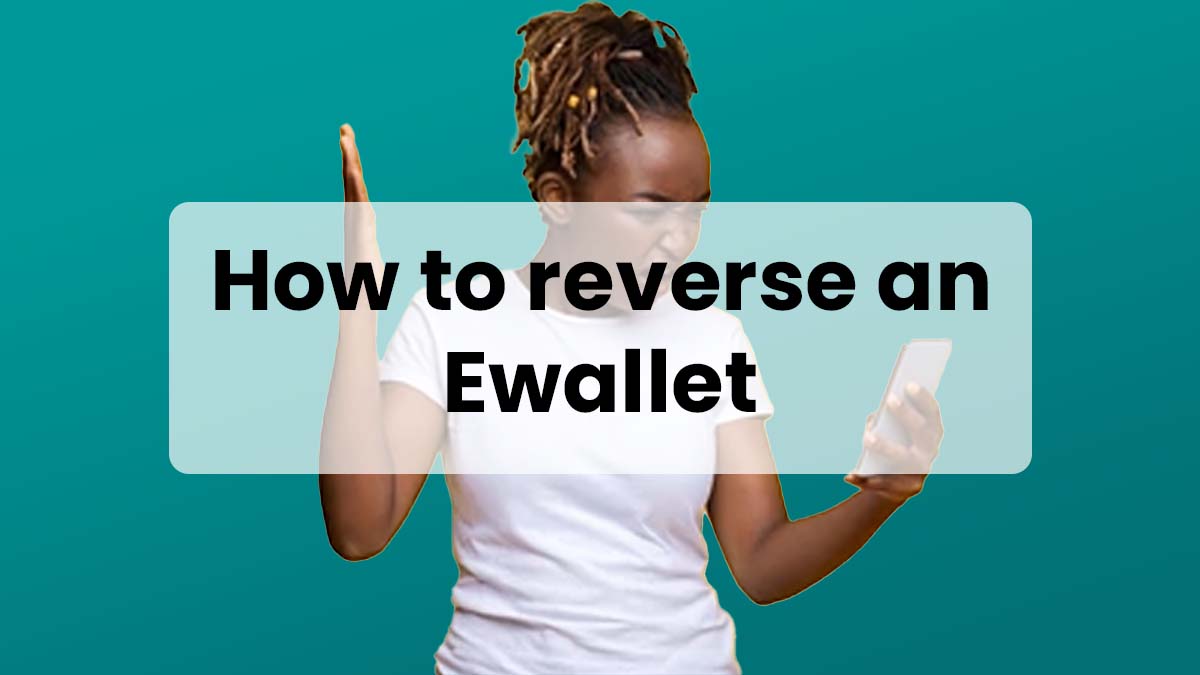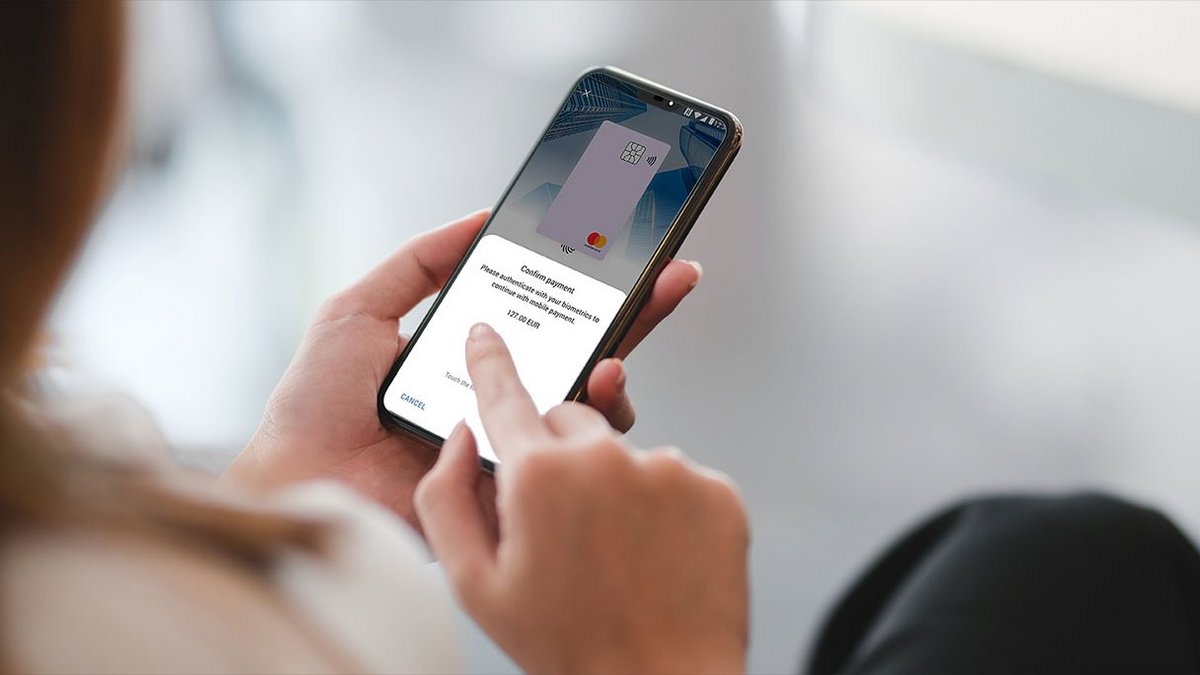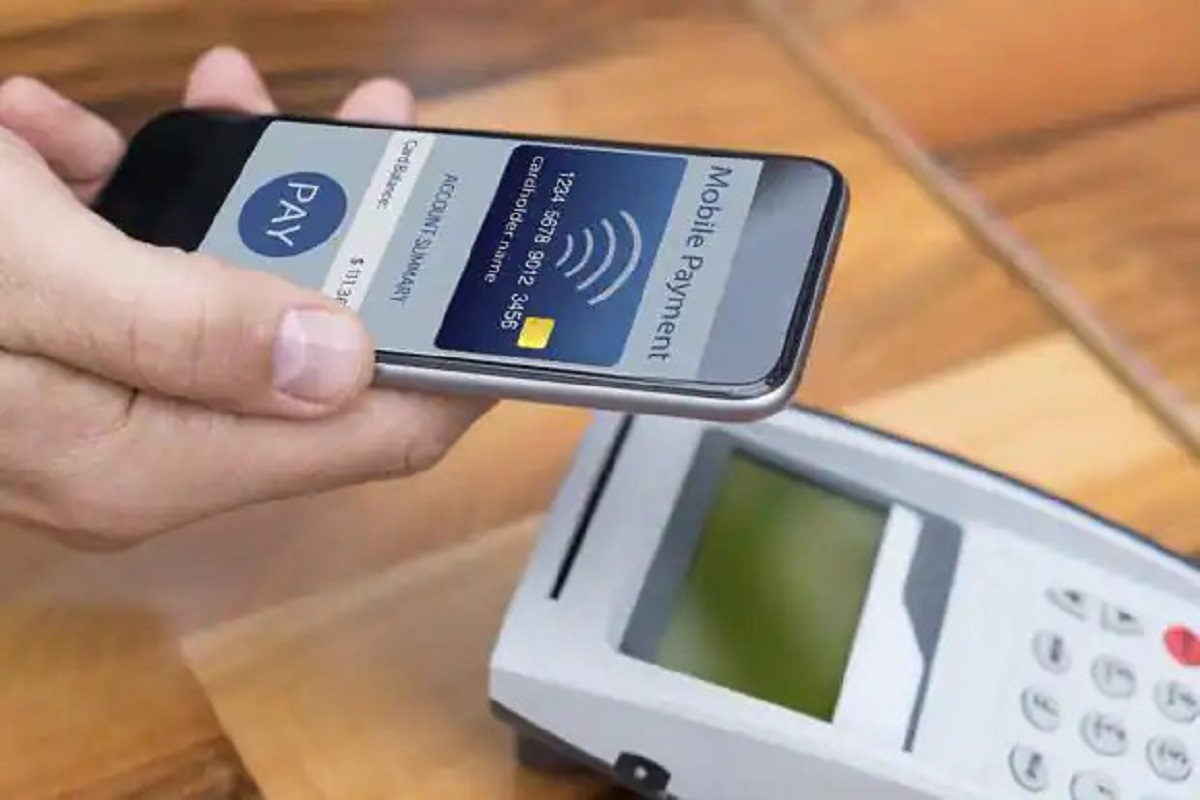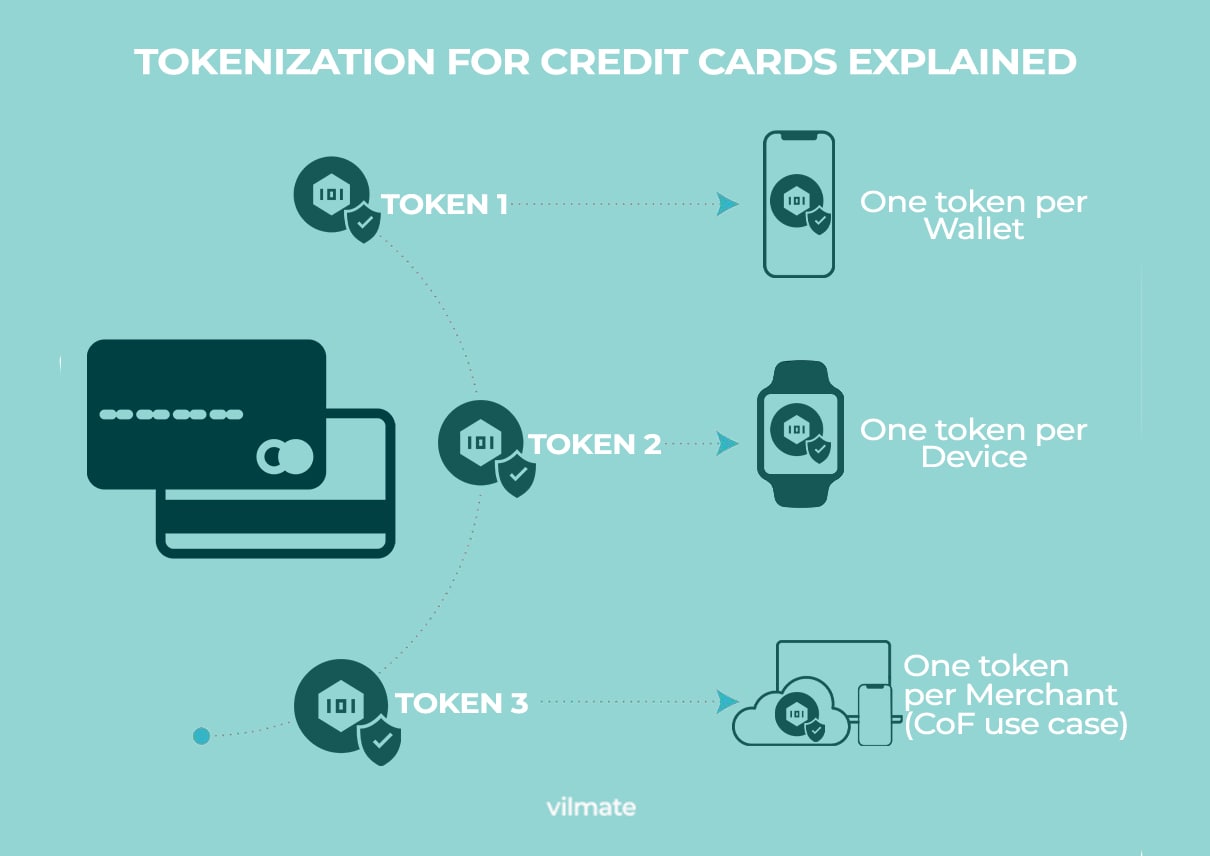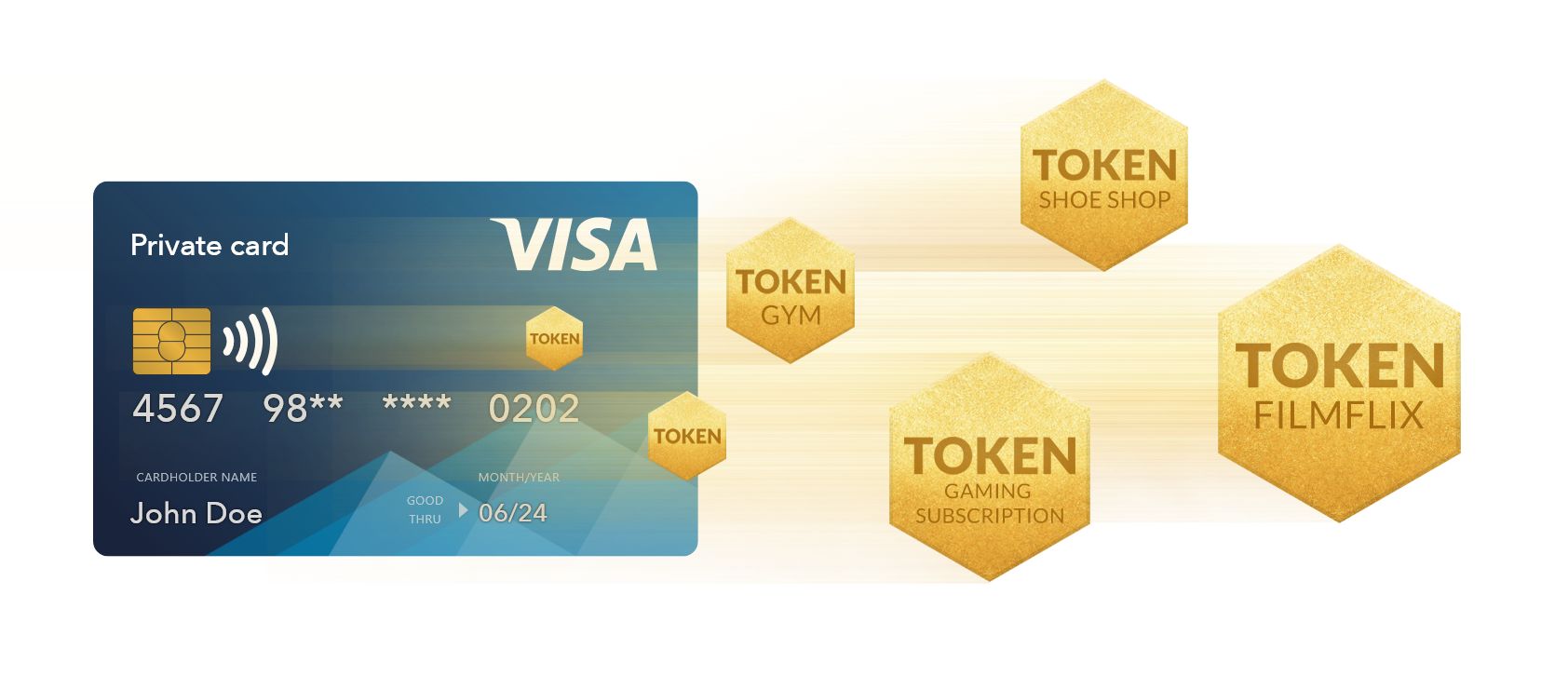Introduction
An E-wallet, also known as a digital wallet or mobile wallet, is a virtual wallet that allows users to store, manage, and make electronic transactions securely. With the rising popularity of online shopping, E-wallets have become increasingly convenient and widely used for making purchases, transferring money, and even paying bills.
While E-wallet transactions are typically quick and seamless, there are circumstances where someone may need to reverse a transaction. Whether it’s due to an accidental payment, a fraudulent transaction, or a dispute with a seller, knowing how to reverse an E-wallet transaction can be valuable information.
In this article, we will explore what an E-wallet is, why someone may want to reverse a transaction, and provide a step-by-step guide on how to reverse an E-wallet transaction. Additionally, we’ll share some tips on preventing the need to reverse E-wallet transactions in the first place.
So, if you’ve ever found yourself in a situation where you need to undo an E-wallet transaction, or if you simply want to be prepared for any potential issues in the future, read on!
What is an E-wallet?
An E-wallet, short for electronic wallet, is a digital version of a physical wallet that allows users to securely store and manage their payment information, such as credit card details, bank account information, and even digital currencies. It acts as a virtual container for various payment methods, offering a convenient and secure way to conduct online transactions.
E-wallets come in various forms. They can be accessed through mobile applications, websites, or even wearable devices. The primary purpose of an E-wallet is to simplify the payment process by eliminating the need to carry physical cash or cards.
When using an E-wallet, users can link their bank accounts, credit cards, or other payment sources to the digital wallet application. Once set up, the E-wallet securely stores the payment information, and users can access it whenever they want to make a purchase or transfer money.
One of the key benefits of an E-wallet is its versatility and widespread acceptance. E-wallets can be used for various transactions, including online shopping, bill payments, money transfers to friends and family, and even contactless payments at physical stores or restaurants.
E-wallets often provide an added layer of security, implementing technologies such as encryption and two-factor authentication to protect users’ information and prevent unauthorized access.
Furthermore, E-wallets offer convenience by eliminating the need to enter payment details repeatedly for each transaction. Once the payment information is securely stored in the E-wallet, users can complete transactions with just a few taps or clicks, reducing the time and effort required for each purchase.
Overall, E-wallets have revolutionized the way we handle payments in the digital age. With their convenience, security features, and wide acceptance, they provide a seamless and efficient way to manage our finances and conduct transactions online.
Why would someone want to reverse an E-wallet transaction?
While E-wallet transactions are designed to be quick, convenient, and secure, there are occasions where individuals may need to reverse a transaction. Here are a few common reasons why someone may want to reverse an E-wallet transaction:
- Accidental payment: It’s not uncommon for people to accidentally make payments or transfer money to the wrong recipient. Whether it’s a typographical error or selecting the wrong payee, these mistakes can happen and may require a reversal to rectify the situation.
- Fraudulent transaction: In unfortunate cases of fraud, individuals may fall victim to unauthorized transactions made through their E-wallet. If they notice any suspicious or unauthorized activity, it is essential to reverse the transaction promptly and contact the E-wallet provider to report the fraud.
- Dispute with the seller: Sometimes, individuals may have issues with a seller, such as receiving a defective product, an item not as described, or not receiving the ordered item at all. In such cases, they may want to reverse the transaction and seek a refund.
- Double payment: Occasionally, technical glitches or network issues can result in a double payment being processed for a single transaction. In these instances, individuals would want to reverse one of the duplicate payments.
- Cancellation of a service: If someone decides to cancel or terminate a subscription-based service, they may need to reverse any recurring payment or auto-debit authorization associated with it to avoid further charges.
It’s important to note that while there are valid reasons to reverse an E-wallet transaction, the process may not always guarantee a successful reversal. Each E-wallet provider may have specific policies and procedures in place for handling transaction reversals, and the outcome will depend on various factors, including the circumstances and cooperation of all parties involved.
Now that we understand why someone might want to reverse an E-wallet transaction, let’s explore the step-by-step process of reversing a transaction in the next section.
How to reverse an E-wallet transaction?
If you find yourself in a situation where you need to reverse an E-wallet transaction, follow these steps to initiate the process:
- Step 1: Check the transaction details: Before proceeding with a reversal, double-check the transaction details to ensure accuracy. Note down the transaction ID, date, and amount involved in the transaction.
- Step 2: Contact customer support: Reach out to the customer support team of your E-wallet provider. Most E-wallets offer multiple channels to contact customer support, such as phone, email, or live chat. Choose the most convenient method for you and explain the situation to the support representative.
- Step 3: Provide necessary information: Be prepared to provide all relevant information related to the transaction, such as the transaction ID, date, and amount. Additionally, if there is any supporting documentation, such as screenshots or proof of fraudulent activity, provide them to the customer support team as evidence.
- Step 4: Wait for resolution: Once you have reported the issue to customer support, they will investigate the matter further. The resolution time may vary depending on the complexity of the case. In some instances, the reversal may be initiated immediately, while in others, further investigation may be required.
- Step 5: Verify the reversal: After the customer support team processes the reversal, verify your E-wallet balance or transaction history to ensure that the transaction has been successfully reversed. If you notice any issues or discrepancies, reach out to customer support again for further assistance.
It is important to note that the process and timeline for reversing a transaction may differ between different E-wallet providers. Some providers may have specific policies in place regarding transaction reversals, while others may handle it on a case-by-case basis. Therefore, it is crucial to follow the guidelines provided by your specific E-wallet provider.
While reversing an E-wallet transaction is possible in certain circumstances, it is always advised to exercise caution and ensure the accuracy of the transaction details before confirming any payments or transfers. Taking preventive measures can help minimize the need for transaction reversals and maintain a hassle-free experience with your E-wallet.
Now that you know the steps involved in reversing an E-wallet transaction, let’s explore some tips for preventing the need to reverse transactions in the first place.
Step 1: Check the transaction details
Before proceeding with a transaction reversal, it is essential to thoroughly review the transaction details to ensure accuracy. This step is crucial as it helps avoid unnecessary confusion and potential complications during the reversal process. Here’s what you need to do:
- Verify the transaction ID: Check the transaction ID associated with the payment or transfer you wish to reverse. The transaction ID is a unique identifier that helps track and identify specific transactions within the E-wallet system.
- Check the transaction date and time: Confirm the date and time when the transaction took place. This information helps in identifying the correct transaction, especially if there are multiple transactions within your E-wallet history.
- Ensure the amount is correct: Double-check the transaction amount to ensure it matches the intended payment or transfer. Sometimes, small errors can lead to incorrect payments, so it’s essential to verify the amount before initiating the reversal.
- Review transaction description or notes: Pay attention to any description or notes associated with the transaction. This information can provide additional context or details that might be relevant during the reversal process.
By carefully reviewing the transaction details, you can minimize the risk of reversing the wrong transaction or encountering unnecessary delays in the reversal process. It ensures that you have accurate information when contacting customer support or initiating the reversal request through the E-wallet provider’s platform.
If you notice any discrepancies or suspect any fraudulent activity within your transaction details, it is crucial to take prompt action. Contact the customer support team of your E-wallet provider as soon as possible to report the issue and seek guidance on initiating the reversal process.
Now that you have checked and confirmed the transaction details, you are ready to move on to the next step and contact customer support to initiate the reversal process.
Step 2: Contact customer support
Once you have reviewed the transaction details and identified the need for a reversal, the next step is to reach out to the customer support team of your E-wallet provider. Contacting customer support is crucial as they are the designated point of contact for resolving issues and initiating transaction reversals. Here’s how you can get in touch with them:
- Find the customer support contact information: Look for the customer support contact details on the E-wallet provider’s website or within the E-wallet application itself. Common methods of contact include phone, email, or live chat.
- Choose the most convenient method: Select the customer support contact method that is most convenient for you. If you have an urgent issue, it may be best to opt for a phone call or live chat for quicker assistance.
- Provide your account information: When contacting customer support, be prepared to provide your E-wallet account information, such as your username, email address, or phone number. This information helps them locate your account and verify your identity.
- Explain the situation clearly: Clearly explain the reason for your contact, stating that you want to reverse a specific E-wallet transaction. Be concise yet provide enough context for customer support to understand the situation. Mention any relevant details such as the transaction ID, date, and amount.
During your communication with customer support, maintain a friendly and respectful tone. Clearly express your concerns and provide any supporting documentation, such as screenshots or proof of fraudulent activity, if available. The more information you can provide, the better equipped customer support will be to assist you with your reversal request.
Keep in mind that response times may vary depending on the E-wallet provider and their customer support team’s workload. Be patient and give them the necessary time to investigate and process your request.
In the next step, we will discuss the importance of providing necessary information to customer support when initiating a reversal.
Step 3: Provide necessary information
When contacting customer support to initiate a transaction reversal, it is important to provide them with all the necessary information. Clear and accurate information will help expedite the process and increase the chances of a successful reversal. Here’s what you need to do:
- Transaction details: Provide customer support with specific details about the transaction you wish to reverse. This includes the transaction ID, date, and amount. This information helps them identify the correct transaction within the system.
- Supporting evidence: If applicable, provide any supporting evidence, such as screenshots or proof of fraudulent activity, to back up your request for a reversal. Including this evidence can strengthen your case and provide customer support with a clearer understanding of the situation.
- Explanation of the issue: Clearly explain the reason for your reversal request. Whether it’s an accidental payment, fraudulent transaction, or other dispute, provide a detailed explanation to help customer support understand your situation fully.
- Contact information: Ensure that you provide your correct and up-to-date contact information, such as your email address or phone number. This allows customer support to reach out to you easily if further information or clarification is required.
By providing accurate and comprehensive information, you can help customer support better understand and address your concerns. This will ultimately facilitate the reversal process and increase the likelihood of a successful resolution.
During your communication with customer support, remember to remain patient and polite. Understand that they may require some time to review your request and investigate the transaction. Be responsive and cooperative if they ask for additional information or documentation to assist with the reversal process.
Now that you’ve provided the necessary information to customer support, you will move on to the next step: waiting for the resolution of your reversal request.
Step 4: Wait for resolution
After providing the necessary information for your transaction reversal, the next step is to wait for the resolution from the customer support team. The length of time it takes to resolve a transaction reversal request can vary depending on several factors, such as the complexity of the case and the workload of the customer support team. Here’s what you should expect during this waiting period:
- Confirmation of request: Once you have provided all the required information, customer support will acknowledge your reversal request. They may provide you with a reference or ticket number for future correspondence regarding the case.
- Investigation process: The customer support team will assess the information provided and conduct an investigation into the transaction in question. They may review transaction records, communicate with relevant parties involved, and analyze any supporting evidence to gain a comprehensive understanding of the situation.
- Timelines for resolution: While specific timelines for resolution can vary, customer support should provide you with an estimated timeframe for when you can expect a decision or update regarding your reversal request. Be aware that more complex cases may require more time to investigate and reach a resolution.
- Response from customer support: Once the investigation is complete and a decision has been reached, customer support will communicate the outcome to you. This could be in the form of a reversal confirmation, a partial refund, or an update on any additional actions that may need to be taken.
During this waiting period, it is important to remain patient and refrain from making any assumptions or taking additional actions without guidance from customer support. Trust the process and allow the customer support team to complete their investigation thoroughly.
If you haven’t received any updates within the estimated timeframe provided by customer support, you can consider reaching out to them for a status update. Maintain a polite and respectful approach, understanding that they may still be in the process of resolving your case.
Once you receive a response or resolution from customer support, you can proceed to the final step: verifying the reversal of the transaction.
Step 5: Verify the reversal
After the customer support team has resolved your transaction reversal request, the final step is to verify that the reversal has been successfully processed. Here’s what you need to do:
- Check your E-wallet balance: Log in to your E-wallet account and verify that the reversed transaction has reflected in your account balance. The reversed amount should be deducted or refunded, depending on the nature of the transaction.
- Review transaction history: Go through your transaction history to ensure that the reversed transaction is recorded correctly. Make sure that the details match the original transaction you requested to reverse.
- Confirm any communication: If you received any communication from customer support regarding the reversal, review it and check if the details mentioned align with what you see in your E-wallet account.
- Contact customer support, if necessary: In case you notice any discrepancies or if the reversal has not been reflected in your E-wallet account as expected, reach out to customer support again. Provide them with the relevant details and seek clarification or assistance regarding the reversal.
Ensure that you verify the reversal within a reasonable time after receiving confirmation from customer support to address any potential issues promptly. By verifying the reversal, you can have peace of mind knowing that the transaction has been successfully reversed and any associated funds have been restored to your E-wallet balance.
Remember to keep a record of any communication or documentation related to the reversal process for future reference. This can be useful in case there are any further inquiries or follow-ups regarding the transaction reversal.
With the verification step completed, you have successfully gone through the entire process of reversing an E-wallet transaction. Taking the time to ensure the reversal has been executed correctly can provide reassurance and help you move forward with confidence.
Before we conclude, let’s explore some essential tips for preventing the need to reverse E-wallet transactions in the first place.
Tips for preventing the need to reverse E-wallet transactions
While the ability to reverse E-wallet transactions provides a safety net, it’s always best to avoid the need for reversals whenever possible. Here are some valuable tips to help prevent the need for transaction reversals in your E-wallet:
- Double-check payment details: Before confirming any payment or transfer, carefully review the recipient’s information to ensure it is correct. Pay attention to account numbers, email addresses, or any other identifiers to avoid sending funds to the wrong person or entity.
- Maintain strong security practices: Protect your E-wallet account by using strong and unique passwords, enabling two-factor authentication, and regularly updating your security settings. Be cautious of phishing attempts or suspicious links that may compromise your account.
- Be mindful of transaction limits: Familiarize yourself with the transaction limits imposed by your E-wallet provider. Understanding these limits can help prevent accidental or unauthorized transactions that exceed your intended amounts.
- Keep records of receipts and transactions: Save transaction receipts and records, particularly for significant or high-value transactions. These documents can serve as valuable proof or evidence in case of any disputes or discrepancies in the future.
- Research sellers or service providers: Before making any purchases or payment transfers, research the credibility and reputation of the seller or service provider. Look for reviews, ratings, or any potential red flags to ensure the reliability and legitimacy of the transaction.
- Resolve issues directly with the seller: If you encounter any problems with a purchase or service, attempt to resolve the issue directly with the seller or service provider before resorting to a transaction reversal. Open communication and willingness to find a mutually agreeable solution may prevent the need for a reversal.
- Regularly update your E-wallet app: Keep your E-wallet application updated to access the latest security features, bug fixes, and performance improvements. Updates often include enhancements to protect against potential vulnerabilities or fraudulent activities.
- Be cautious of public Wi-Fi networks: Avoid using public Wi-Fi networks when conducting E-wallet transactions, as they can expose your personal information to potential hackers. Stick to secure and trusted networks to minimize the risk of unauthorized access.
- Monitor your account regularly: Regularly check your E-wallet account activity and transaction history to identify any suspicious or unauthorized transactions. Promptly report any issues to your E-wallet provider and take necessary steps to resolve them.
By following these tips, you can reduce the likelihood of encountering issues that require transaction reversals. Prevention is always better than cure, and taking proactive measures to safeguard your E-wallet transactions ensures a smooth and secure digital payment experience.
In summary, transaction reversals in E-wallets are a valuable feature that allows you to rectify accidental payments, fraudulent transactions, or other disputes. However, it is important to double-check transaction details, contact customer support when needed, provide necessary information, wait for resolution, and verify the reversal to ensure a successful outcome.
By implementing preventive measures, such as reviewing payment details and maintaining strong security practices, you can minimize the need for transaction reversals and enjoy a seamless and secure experience with your E-wallet.
Conclusion
Reversing an E-wallet transaction can be a necessary course of action in certain situations, such as accidental payments, fraudulent transactions, or disputes with sellers. By following the step-by-step process outlined in this article, you can initiate a reversal request and work towards resolving the issue.
Remember to thoroughly check the transaction details, reach out to customer support with all the necessary information, and patiently wait for the resolution of your reversal request. Once the reversal is confirmed, ensure that it reflects accurately in your E-wallet account by verifying the transaction and taking appropriate action if needed.
To avoid the need for transaction reversals in the first place, it is crucial to double-check payment details, maintain strong security practices, and keep records of your transactions. Researching sellers or service providers, resolving issues directly with them, and regularly updating your E-wallet application can also contribute to a smooth and secure transaction experience.
By implementing preventive measures and being cautious with your E-wallet transactions, you can minimize the likelihood of encountering issues that require reversals. Prevention is key to maintaining a hassle-free digital payment experience.
Now armed with the knowledge of how to reverse an E-wallet transaction and prevent the need for reversals, you can navigate the world of digital payments confidently and securely.







